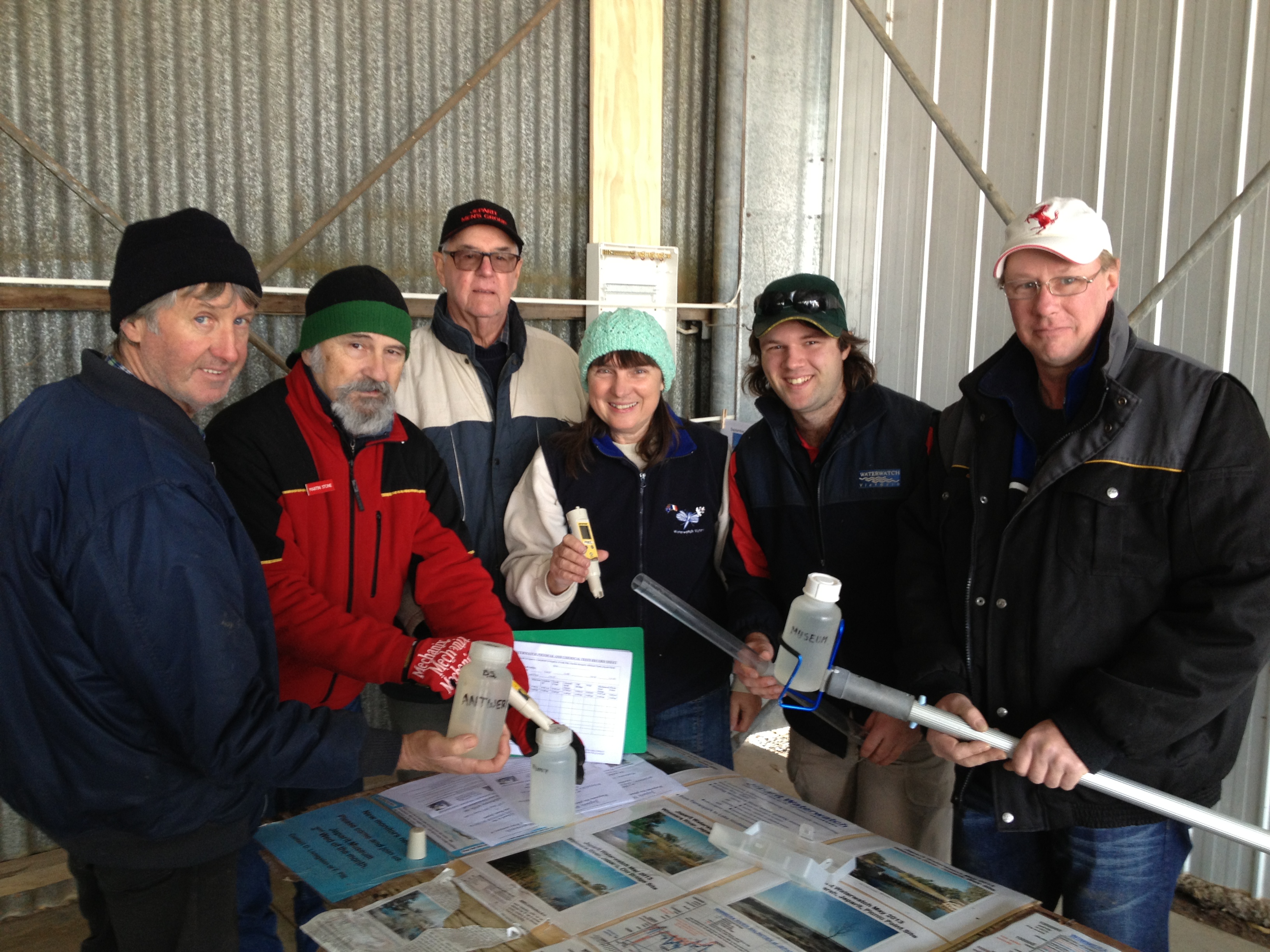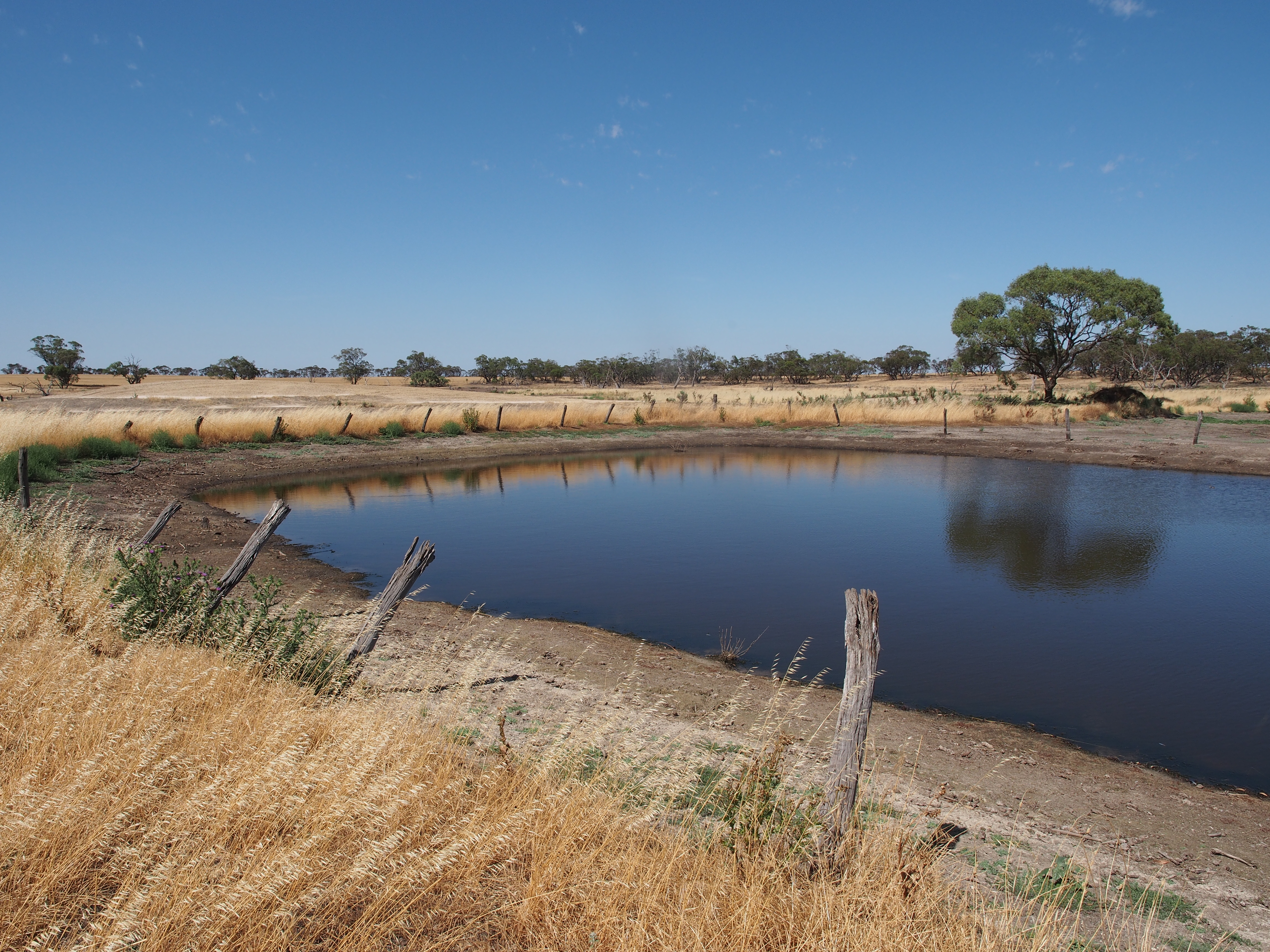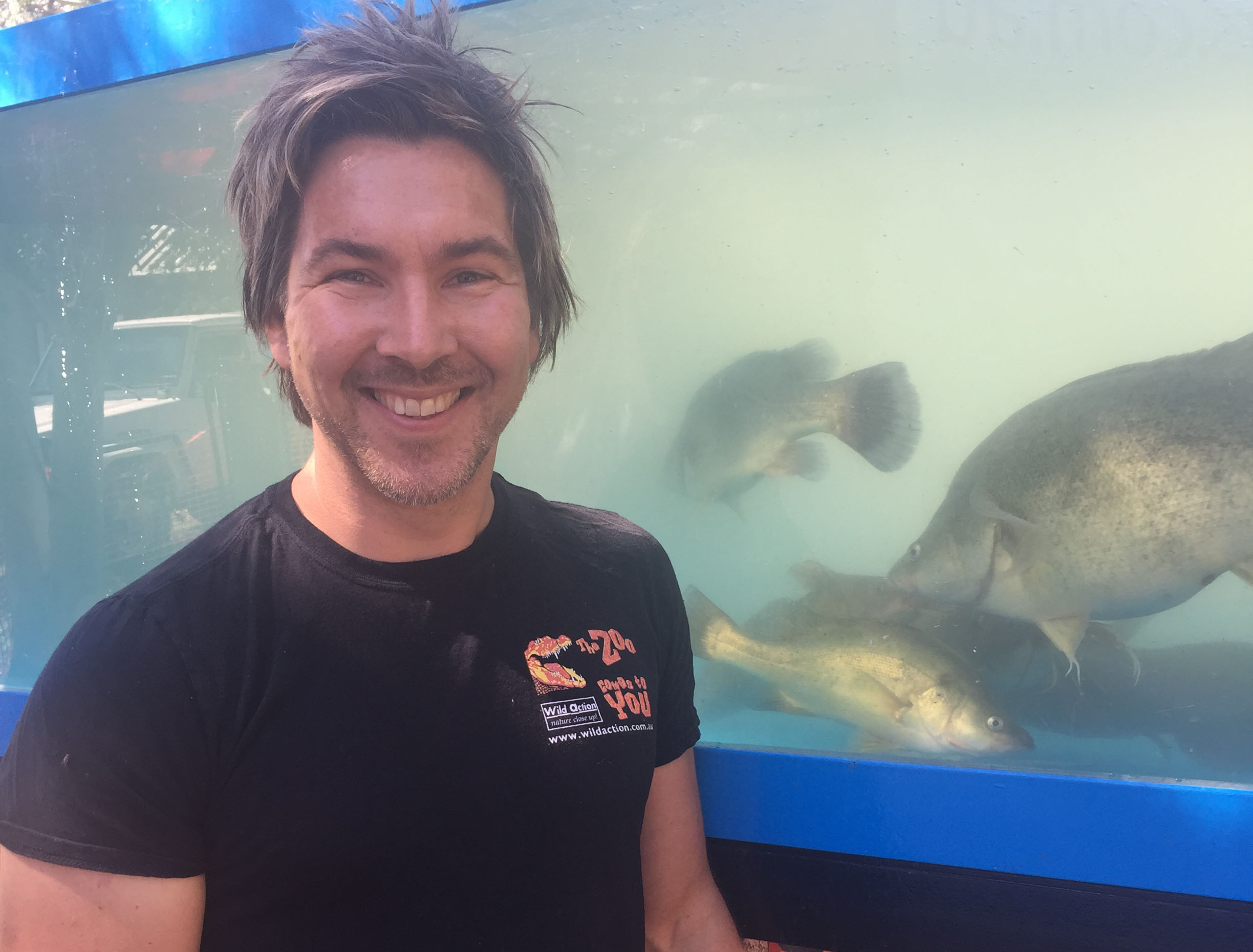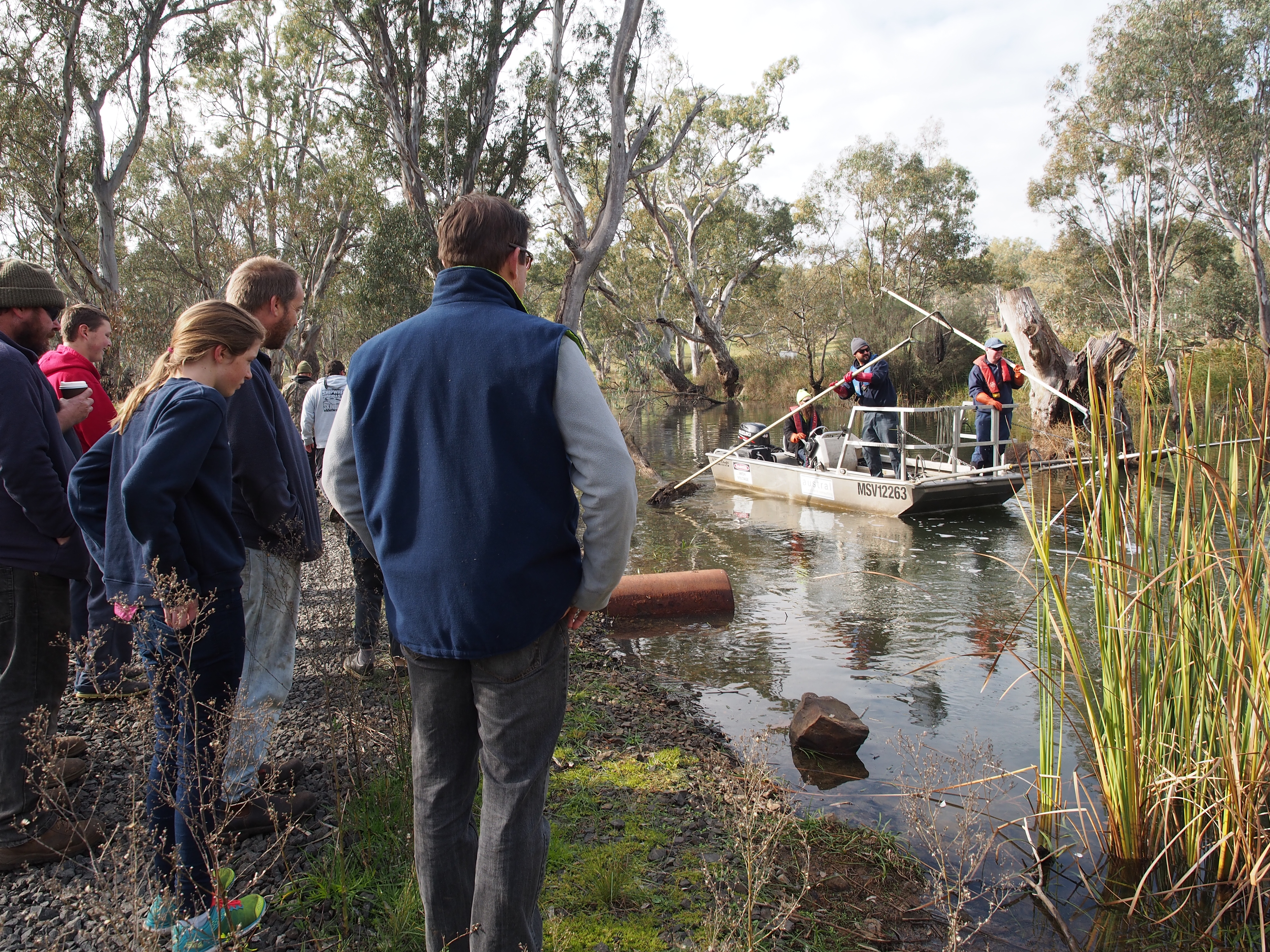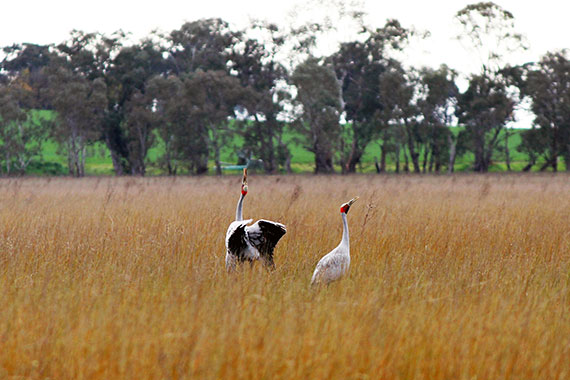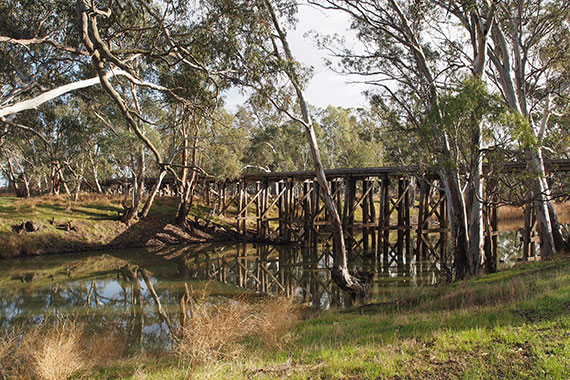Total rainfall in the Grampians-Wimmera-Mallee headworks catchment area during 2022-23 was above average and was particularly high in spring and early summer. Inflows to storage in October and November were 465 percent and 860 percent of the long-term average for each month, respectively.
All major rivers and creeks in the western region flooded during spring 2022. The Wimmera River at Horsham peaked at 11,628 ML per day on 19 October, the MacKenzie River at MacKenzie Creek peaked at 1,263 ML per day on 14 October, Mount William Creek at Lake Lonsdale peaked at 1,417 ML per day on 21 November, and the Glenelg River at Dergholm peaked at 5,598 ML per day on 2 November. The high flow from the Wimmera River filled Lake Hindmarsh to about 50 percent capacity, the highest lake level since 2011-12.
The wet conditions and associated run-off met or exceeded planned environmental watering actions in the Wimmera and Glenelg river systems and most Wimmera-Mallee wetlands from July 2022 to February 2023, triggering significant ecological responses. Fish surveys conducted in early 2023 detected large numbers of juvenile Tupong in the Glenelg River for the first time in several years, and Angler Report Card Fish Surveys indicated larger catches of golden and silver perch in the Wimmera River compared to recent years.
Water storages across the Wimmera-Mallee System Headworks were collectively at 31 percent capacity at the start of 2022-23, peaked at 79.5 percent in late November and had dropped to 65 percent capacity at the start of April 2023. The Wimmera and Glenelg Rivers Environmental Entitlement 2010 received a 100 percent allocation in November 2022. This allocation, combined with carryover from 2021-22, meant 66,722 ML of water for the environment was available in the VEWH’s accounts in 2022-23. The CEWH also received a 100 percent allocation in the Wimmera system for the first time, boosting available water by 28,000 ML. Rules associated with the CEWH allocation mean it can only be used in the Wimmera River and lower Mount William creeks. The Wimmera-Mallee wetlands also received a 100 percent allocation in 2022-23, which is only the second time the entitlement has received a full allocation since it was established in 2010.
The Bureau of Meteorology has forecast below-average rainfall across the western region during autumn and winter 2023. GWMWater has indicated the VEWH can expect opening allocations on 1 July 2023 of roughly 30 percent for the combined Wimmera and Glenelg Rivers Environmental Entitlement 2010 for 2023-24. Longer range outlooks for September 2023 have river allocations ranging from 30 to 96 percent and Wimmera-Mallee wetland allocations from zero to 84 percent in the planning scenarios. The CEWH is not likely to receive any allocation in 2023-24 unless storage inflows are significantly above the long-term average. The VEWH expects to carry over about 48,100 ML in the Wimmera and Glenelg rivers environmental entitlement and 970 ML for use in the Wimmera-Mallee wetlands on 1 July 2023. The CEWH is expecting to carry over about 21,300 ML. These combined carryover volumes will help support environmental watering actions in 2023-24 and subsequent years if dry conditions develop and persist.
Annual environmental water allocations in the western region in each of the four years before 2022-23 were less than the minimum volume needed to deliver planned watering actions to the Wimmera and Glenelg rivers and Wimmera-Mallee wetlands. Carryover requirements were a key consideration in each of those years and significantly influenced the range of environmental watering actions that were authorised and delivered. The relatively full storages and high allocations received in 2022-23 have significantly boosted environmental water supplies for the short to medium term. This means that additional environmental watering actions can potentially be delivered in 2023-24 to increase the size and condition of native plant and animal communities in rivers and wetlands across the western region to make them more resilient to the next dry period. The Glenelg Hopkins and Wimmera CMAs have planned potential environmental watering actions for 2023-24 to consolidate recent improvements in environmental condition without setting a target carryover volume for 2024-25. The VEWH will monitor allocations and forecast climatic conditions during winter and spring and work with the Glenelg Hopkins and Wimmera CMAs to set a carryover target for 2024-25 if necessary.
The Wimmera-Mallee Pipeline wetland portion of the environmental entitlement is only likely to receive an allocation in 2023- 24 if storage inflows are close to or greater than the long-term average. The planned watering actions for the wetlands in 2023- 24 are expected to use up to 400 ML of available carryover, which will leave about 575 ML to support watering actions in future years. The current supply for the Wimmera-Mallee wetlands may allow essential watering actions to the end of 2026-27 without new allocations
